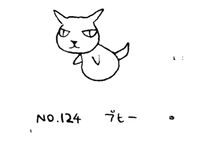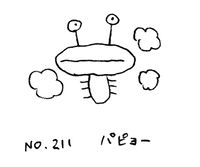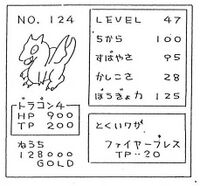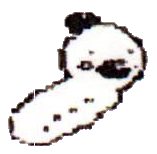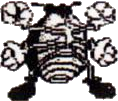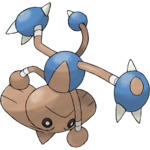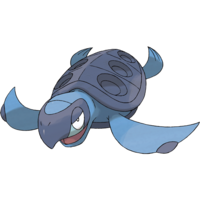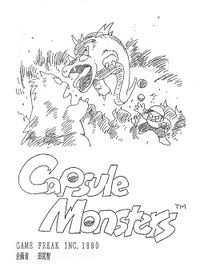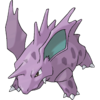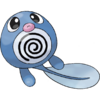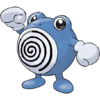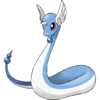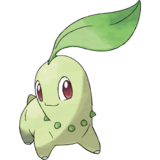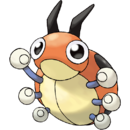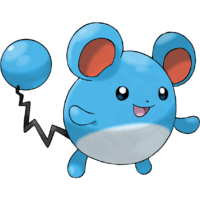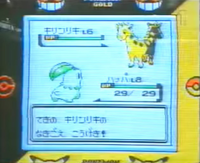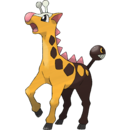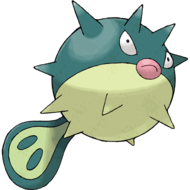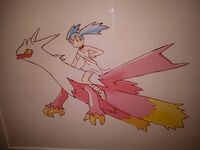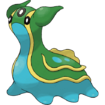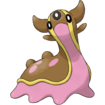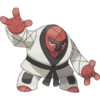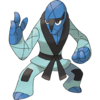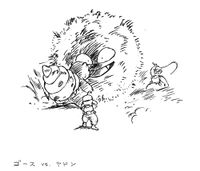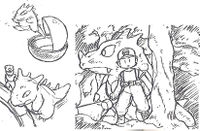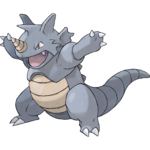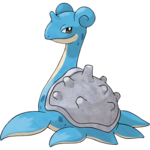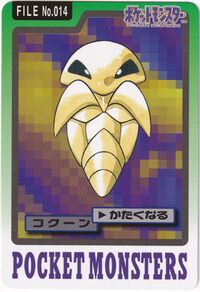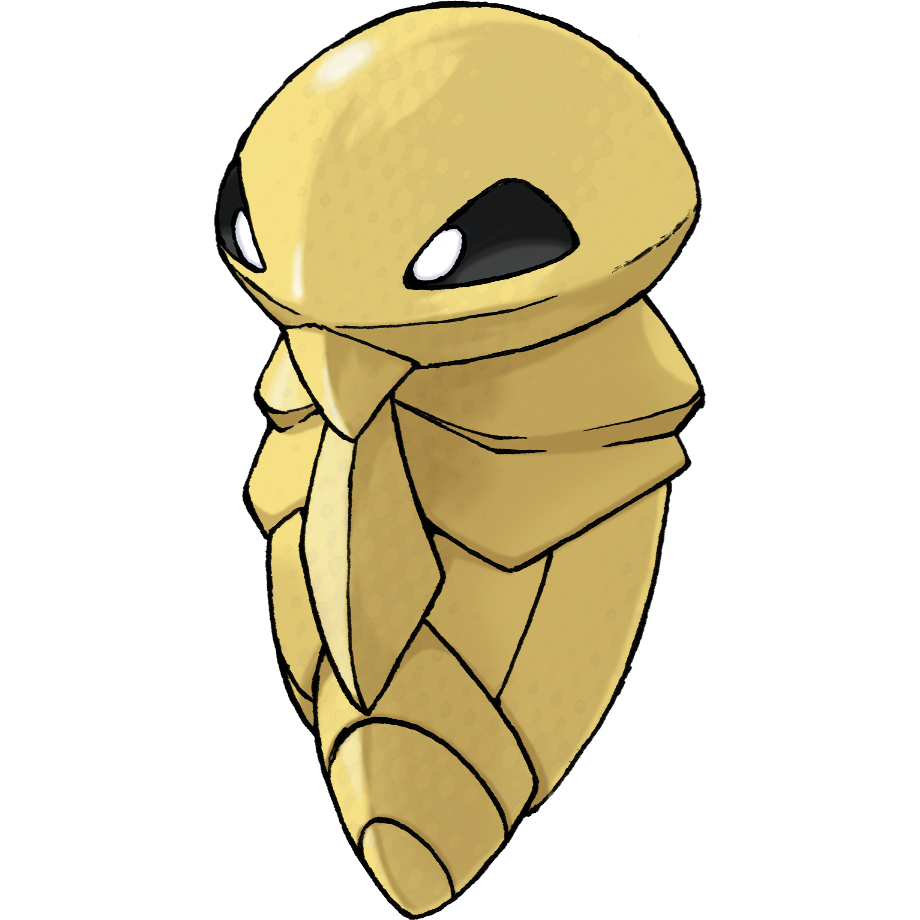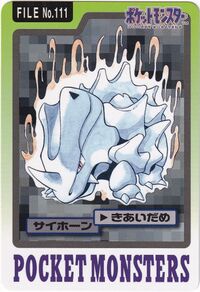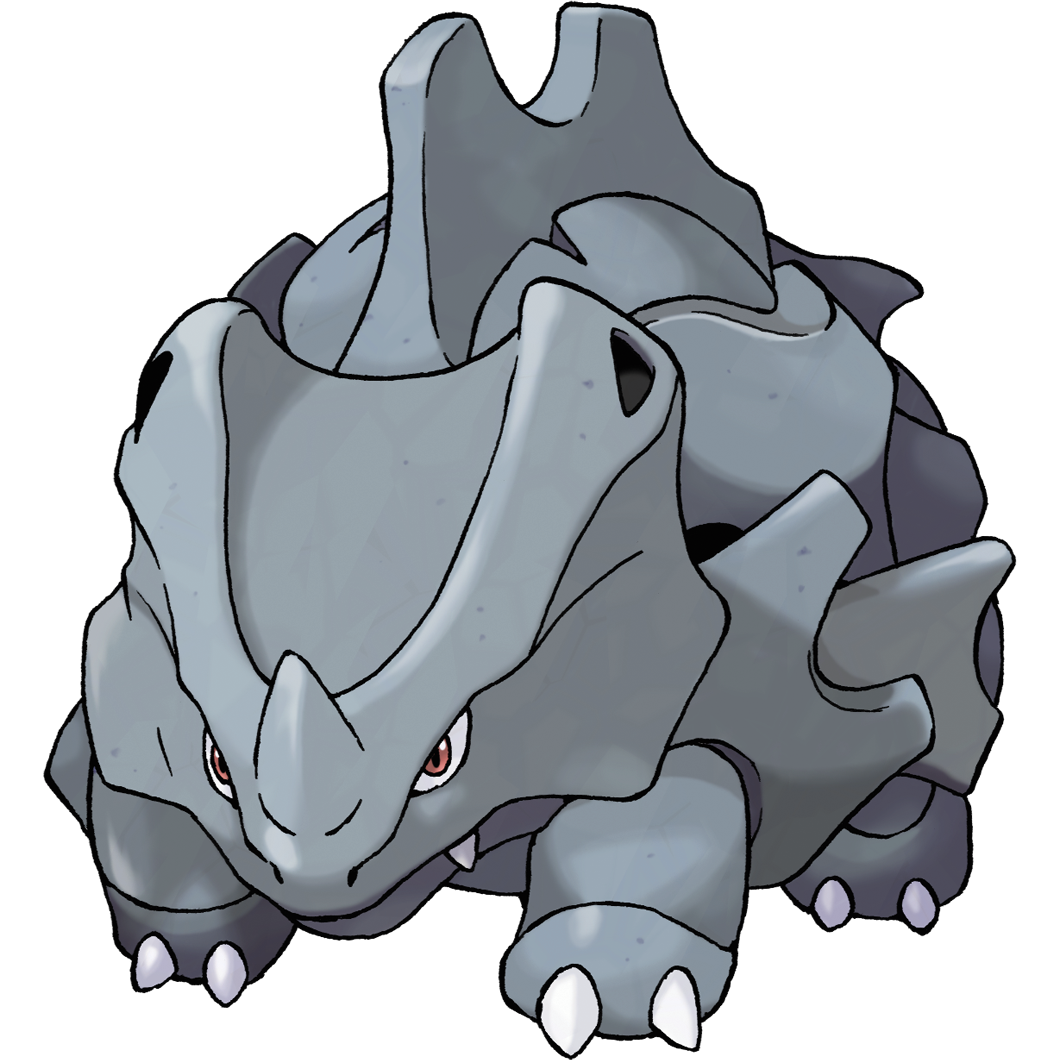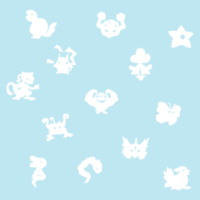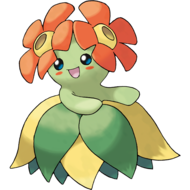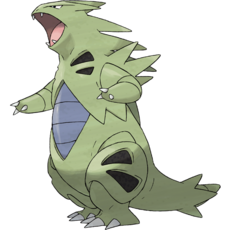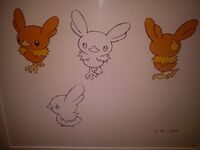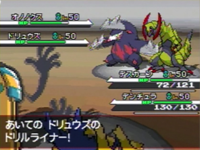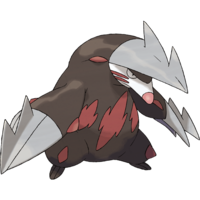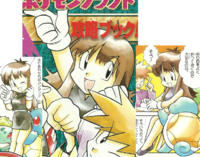List of unused Pokémon and character designs
There are Pokémon and characters that were just a few of many different designs that Game Freak created. Only a few were added, and even those often went through redesigns before making it into the final product.
Unreleased Pokémon
| Debut | Capsule Monsters |
|---|
Nothing is known about this Pokémon other than its Pokédex number, #124, the same as Jynx.
| Debut | Capsule Monsters |
|---|
Nothing is known about this Pokémon other than its Pokédex number, #211, the same as Qwilfish.
| Debut | Capsule Monsters |
|---|
In the artwork featuring early versions of Red and Rhydon inside a cave, an unidentified Pokémon can be seen. It appears to be hatching from an egg.
| Debut | Capsule Monsters |
|---|
Nothing is known about this first Pokémon 'Godzillante'. It may have been a Fire-type, as it is shown to be breathing fire. As its name implies, it was most likely based on Godzilla. Godzillante notably shares a resemblance to one of the fake Pokémon toys shown in the Pokémon Pocket Monsters manga volume 1 (p. 107). Nothing is known about the second Pokémon 'Gorillaimo'. Its hat could be a reference to the character Ninten from the Ape Inc. game, Mother. Its also resembles the Nintendo character Donkey Kong.
| Debut | Capsule Monsters |
|---|
Nothing is known about this Pokémon other than its Pokédex number, #174, the same as Igglybuff.
Nothing is known about this Pokémon. It may be a Bug-type.
The evolution of Kasanagi. It may be a Bug-type as it resembles Ledyba.
The only known information about this creature is its name and image. While it resembles a seal, this image appeared in magazines after the release of Red and Green so while many fans believe it may have been an early version of Seel, this may not be true because Seel already existed at the time. However, it is most likely a Template:Type2 and could have been a scrapped pre-evolution for Lapras or an extremely early version of a member of the Spheal evolution family. In the alpha of Gold and Silver, its National Pokédex number was 212, it was a Template:Type2, and knew the moves Growl, Water Gun, and Tackle. Despite the numbering, it was the Water-type starter in the alpha demos.
Honōguma's name is a combination of 炎 honō for flame, and 熊 kuma for bear. Like Kurusu above, its name and image are all that is known. While not confirmed, its name almost definitely means it was a Template:Type2. It bears a slight resemblance to Raichu, but doesn't share the same type or species of animal (Raichu being a rodent and Honōguma being a bear), so it is highly unlikely it was related to it. Given its name refers to it as a bear, it could have been an early version of the Teddiursa evolution family, or, while not a bear, but having the same bipedal stance and being Fire-type, an early version of the Cyndaquil evolution family. In the alpha it was a Template:Type2, and knew the moves Ember, Scratch, and Leer; and was the Fire-type starter.
| Debut | Game Freak |
|---|
Altered Pokémon
| Debut | Capsule Monsters |
|---|
- Main article: Gengar (Pokémon)
- Main article: Nidorino (Pokémon)
An early version of Gengar, and a creature with traits of Nidorino, Gyarados and Feraligatr.
- Main article: Poliwag (Pokémon)
An early version of Poliwag.
- Main article: Poliwhirl (Pokémon)
- Main article: Poliwrath (Pokémon)
An early version of Poliwhirl or Poliwrath. Notably it is wearing a crown, similar to the King's Rock necessary to evolve Poliwhirl into Politoed.
- Main article: Dragonair (Pokémon)
An early version of Dragonair.
- Main article: Chikorita (Pokémon)
Happa's name simply means "leaf" in Japanese. Happa is the early version of Chikorita. Happa resembles Chikorita without its body and legs. It isn't known why the design was changed, but without the body and legs, Chikorita would have been significantly smaller than the other two Generation II starters; Cyndaquil and Totodile. In the alpha, its Pokédex number was 152 and it knew the moves Leech Seed, Tackle, and an unknown move called "Serene".
- Main article: Ledyba (Pokémon)
An early version of Ledyba. Unlike the final design, it has a black abdomen rather than a cream colored one. It also has a single pair of hands, and a pair of feet, and it appears to be headless, with its eyes and antenna attached to its body. There is also beta art of Silver. His hair is shorter and he appears to be closer to Ethan's age.
- Main article: Marill (Pokémon)
An early version of Marill. While they are recognizably similar, they are visually quite different. The pink/purple color is the main difference as well as the notably missing large ears. It also sports a thinner body, more resembling a rodent, but does not sport Marill's erratic tail pattern, though with this being a concept art, small details were most likely not a concern at the time.
- Main article: Girafarig (Pokémon)
This concept art of Girafarig shows the original design contained two full-sized giraffe heads, instead of the final version's one. It is also unknown why the design was changed, but overall it remains mostly similar outside of some coloring differences (though, because this is concept art, specific coloring details were most likely not considered at the time). This design might be reference to Girafarig's name being a palindrome.
- Main article: Qwilfish (Pokémon)
Bukū's name is derived from "fugu", the Japanese word for blowfish. It is most likely an early version of Qwilfish. Notable differences between Qwilfish and this pre-release version are the colors, and shape of the tail. However, the shape of the tail does appear slightly similar to the length of the tail in Qwilfish's Generation II back sprite. However, this was just an error and no other generation shows Qwilfish's tail that short.
- Main article: Blaziken (Pokémon)
- Main article: Latias (Pokémon)
Sometimes referred to as Latiaziken or Latiken by fans, this beta image from Pokémon Ruby and Sapphire depicts a creature with traits of both Latias and Blaziken. In appearance, it more closely resembles Blaziken. However, some features, including the size, are more similar to Latias. Some of its features do not resemble those of either Pokémon, such as the hands.
- Main article: Shellos (Pokémon)
- Main article: Gastrodon (Pokémon)
Prototype back sprites of Shellos and Gastrodon show an another form for each. These forms are possibly leftovers from when Shellos and Gastrodon were planned to be in Generation III. Shellos's sprite is pink, like its West Sea variation, and seems to combine the western variation's head with the Eastern variation's body, while Gastrodon's sprite is brown and looks like its Western variation, but with more rock-like protrusions on its body. Gastrodon's Platinum Pokédex entry appears to reference its beta sprite.
| Debut | [[|Nintendo Dream]] |
|---|
- Main article: Throh (Pokémon)
- Main article: Sawk (Pokémon)According to interviews with Ken Sugimori in Nintendo Dream, in development, Sawk and Throh both had horns, making them look more like Oni. However, they were replaced with eyebrows so as not to clash with
- Main article: Tornadus (Pokémon) and
- Main article: Thundurus (Pokémon), who both were originally designed to be red and blue, like Throh and Sawk.
Minor alterations
| Debut | Capsule Monsters |
|---|
- Main article: Blastoise (Pokémon)
- Main article: Staryu (Pokémon)
In this early depiction of a battle, Blastoise is without its signature water cannons. Its shell is also much more rounded, making it appear similar to Golem. It also has a much flatter face and more pronounced ears. Staryu is much more geometric in its design without its gem's supporting struts. Staryu closely matches its Red, Green, and Blue sprites.
| Debut | Capsule Monsters |
|---|
- Main article: Gastly (Pokémon)
- Main article: Slowbro (Pokémon)
Early versions of Gastly and Slowbro. Gastly closely matches its Red, Green, and Blue sprites.
| Debut | Capsule Monsters |
|---|
- Main article: Rhydon (Pokémon)
Early sketches of the Capsule Monsters creature that would become Rhydon, the first designed Pokémon.
| Debut | Capsule Monsters |
|---|
- Main article: Lapras (Pokémon)
An early version of Lapras. While they are recognizably similar, they are visually quite different. Notably Lapras's curly ears are not present. Under the chin the pattern appears different, blending in with the texture of the rest of the head. There are also no visible appendages or tail but that may be due to the water. However, it bears a striking resemblance to its Generation I back sprite. Also in the sketch is a early design of Red.
- Main article: Kakuna (Pokémon)
The "arms" on Kakuna seen in its Red and Blue sprite are commonly mistaken to be a sprite error, as they are rarely shown in any other media. They have so far only been shown on its Red and Blue sprite and a Pocket Monsters Carddass Trading Card.
- Main article: Rhyhorn (Pokémon)
Rhyhorn originally had more pointed spikes, as seen in its Red and Blue sprite and a Pocket Monsters Carddass Trading Card.
| Debut | Pokémon Blue (Japanese) |
|---|
- Main article: Bellossom (Pokémon)
Both early artwork of Bellossom and its Gold and Silver artwork show that it was originally to be a similar color to its other evolutionary relatives. A possible explanation for this change would be the intention to avoid another racial controversy, as the original Bellossom design appears similar to traditional polynesian dress. However, this is unlikely to be the case.
- Main article: Tyranitar (Pokémon)
This early version of Tyranitar is nearly identical to the design seen in the finalized Gold and Silver versions. It was shown alongside two unnamed Pokémon (seen in the section above) on the cover of a Japanese gaming magazine, where it was the only early design to become a released Pokémon. It has very few differences compared to the final version. Of these differences, the early Tyranitar design is more heavy-set, has a tan rather than indigo belly, has arms more reminiscent of Nidoking, and dozens of short spikes upon its back rather than a few long ones. It seems peculiar that Tyranitar was nearly completed at the time, but the other two featured Pokémon were never seen in their original designs.
- Main article: Treecko (Pokémon)
Concept art of Treecko shows numerous designs for the creature before the final design was decided. Many of these early sketches more closely resemble real geckos than the final product.
- Main article: Torchic (Pokémon)
This early version of Torchic is nearly identical to the current Torchic, aside from the large floppy ears, rather than its final design's flame shaped feathers on its head, and a flame-shaped marking on the back of its head.
- Main article: Excadrill (Pokémon)
In Excadrill's first appearance in a promotional video, the red markings on its body were mirrored. However, it was changed to its current appearance the next video it appeared in.
Unreleased characters
This unnamed female Trainer art was revealed in a magazine prior to Generation II but never officially released. It is unknown who this Trainer was supposed to represent, be it a main character, a supporting character, or just an NPC. Visually, she has similarities to multiple Trainer classes. Her age and appearance make her appear similar to a Beauty or Cool Trainer, but her outfit is similar to a Lass or Picnicker. There is an object on her shirt that looks like what could have been a gym badge. This badge has a rain drop on it, meaning she could have been a Water-type Gym Leader.
Hiding in the background of the same magazine as the female Trainer above was a male Trainer that was never used. As with the female Trainer, it is unknown if he was designed as a main character, or supporting character, or was simply representing a Trainer class. He has hints of multiple classes, such as a Tamer, Psychic, Juggler, Burglar, PokéManiac, Gambler and a male Rocket Executive. There is an object on his bandana that looks like what could have been a gym badge. This badge has a red diamond on it. Due to the dark colors used and the fact that he is pictured with Tyranitar, it is possible he was a Dark-type Gym Leader.
Unknown cries
In Red and Blue
Within the coding of Pokémon Red and Blue, there is data for nine unused Pokémon cries. The cries are defined accordingly to the Pokémon's index numbers. Whereas cry data for 30 Missingno. are left blank, resulting in voice 0 (Nidorino), pitch 0 and length 0 cries, there are a number of remaining cries which appear to have been defined intentionally. Cry 181 was notably reused for Crobat in Gold and Silver.
Base 14, Pitch 224, Length 96. Loosely resembles Poliwag, may be a reference to its prototype design or Nyosuke.
Base 15, Pitch 64, Length 128. Similar to Dragonair, longer than cry 94.
In Ruby and Sapphire
In a leaked German version of Pokémon Ruby and Sapphire, labelled 'Debugging Version 0509A' the cries of Pokémon with index numbers 252-276 are playable in the 'Driver Test' menu. Although these Pokémon normally correspond with ?, they have the cries of existing Pokémon exclusively to the Driver Test, suggesting that they may have once been real Pokémon.
There is an unused Pokémon cry assigned to index number 266.
There is an unused Pokémon cry assigned to index number 269.
